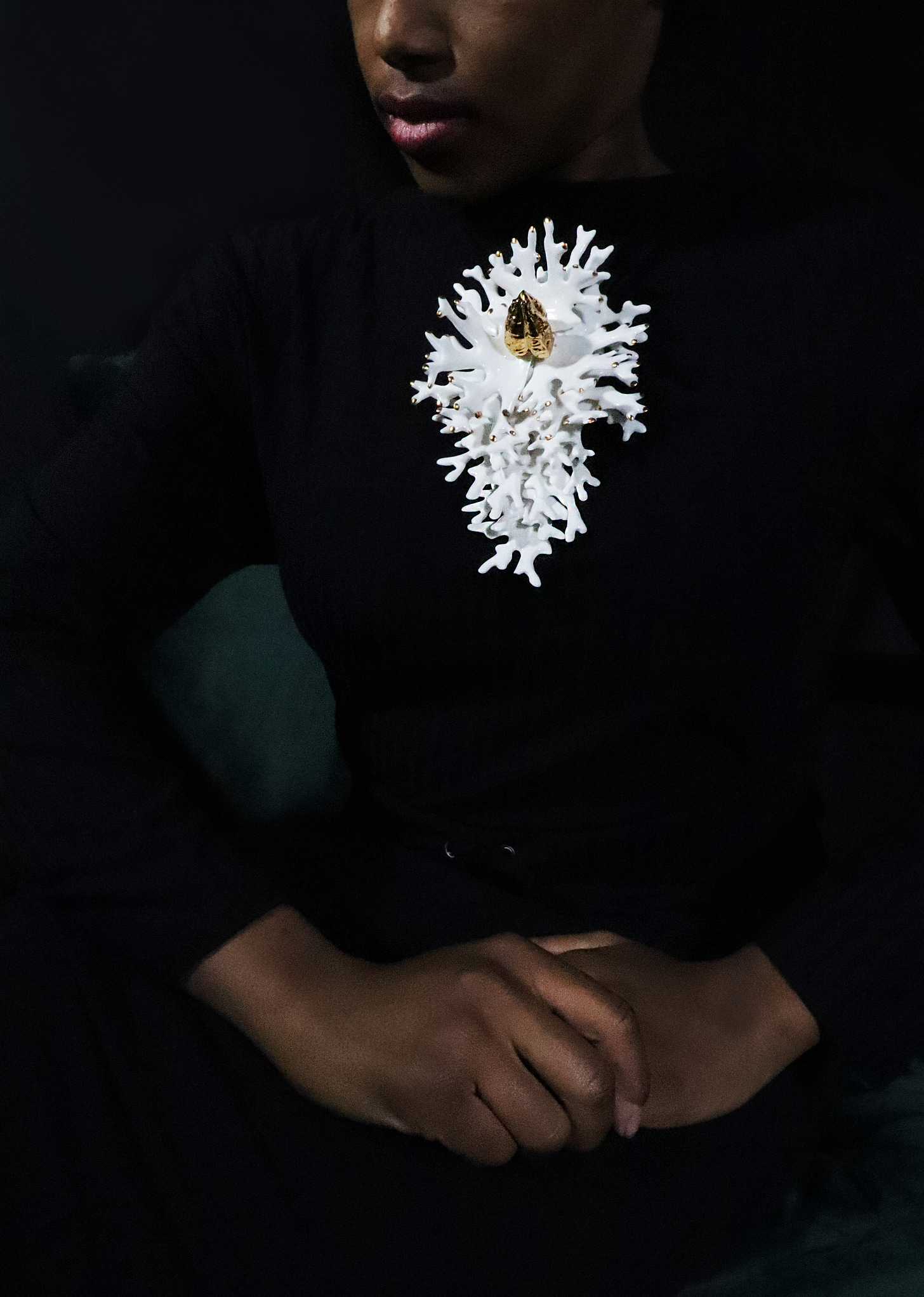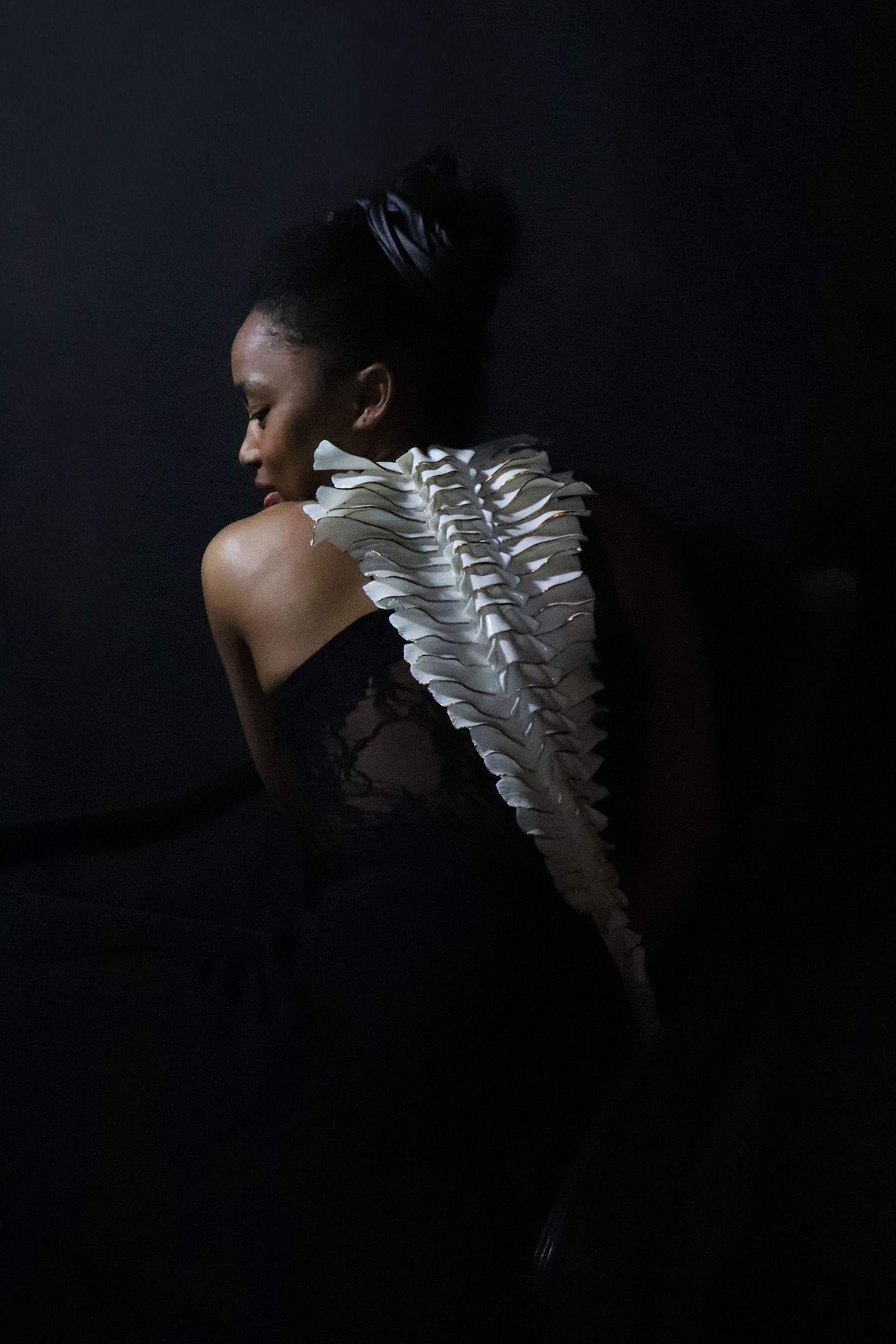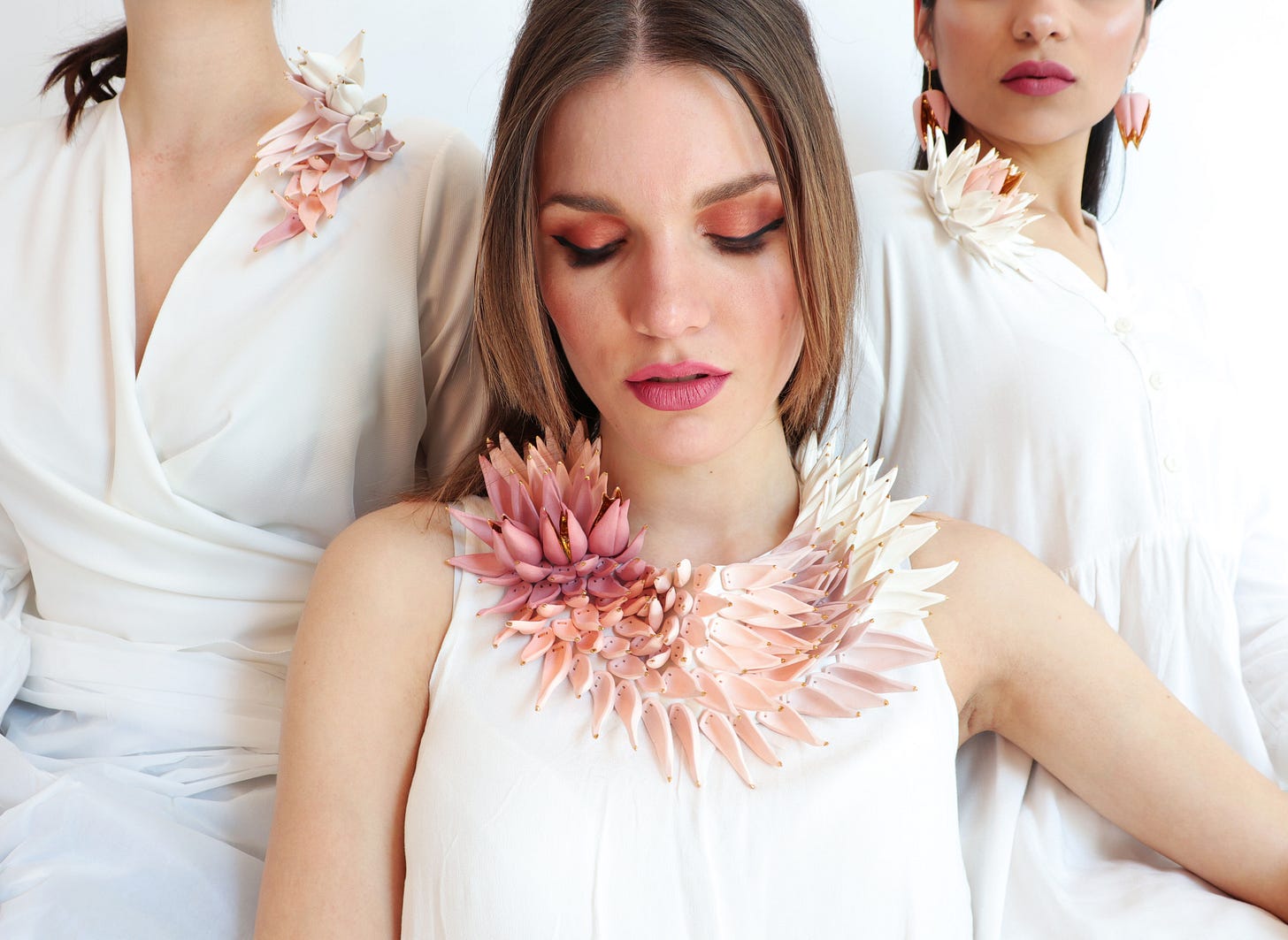Mt7 — CERAMICS: Raluca Buzura
TORTOSA | From kindling to kiln, how ceramics become wearable art installations
WORD BY AMELIA JOHANNSEN
Can jewellery have the same magnitude of expression as more traditional visual arts media? Romanian designer Raluca Buzura thinks so. By pushing the limits of personal adornment to communicate something deeper about the human condition, Buzura promotes a broader understanding about the role of jewellery in the progressive art movement. Her evocative works of wearable art are not only beautifully handcrafted, they’re a representation of cultural and societal attitudes of our time. Buzura’s unique body of work is the result of many years of inquiry, experimentation, passion, and dedication.
This process led her to combine classical craftsmanship with sophisticated symbolism. Through her choice of materials, patterns, colours, and forms, Buzura is able to express complex realisations of femininity, climate change, and materialism while staying at the cutting edge of fashion design. Joining Cannopy Magazine from Tortosa, in the north-eastern coastal region of Spain, Buzura breaks down her creative process, from the kindling of an idea to the firing of a kiln.
CAN | How do you translate your personal experiences into new designs and collections?
RB ── My creations come from an inner world whose sole purpose is to convey a message about what is affecting me the most. My subjects emphasise the principles that guide me, such as time, nature, activism, and femininity. It always starts with an experience that has a great impact on me and, if the effect of it persists, I decide to release all this energy and my considerations about it into an object or collection. When everything clarifies, a long process begins.
The ceramic technological process is a complex one and involves a preparation of manufacturing with a large volume of work: from modelling the original, to the realisation of the negatives in which the porcelain is poured to later obtain the parts, the polishing and glazing of the pieces, the firing at a high temperature (1240°C), application of gold, and second firing (800°C), and lastly assembly. It is a process that can take up to one month until one piece is finished – lots of waiting time – so patience has to be my closest friend.
CAN | How does your work challenge the traditional understanding of jewellery?
RB ── Firstly, through my aesthetics and secondly, my production methods. I experienced a long journey of research and experimentation before I was able to define my own style. This process involved self-analysis acquired with time and patience—to the point where my creations identified with what I thought, felt, and lived. My three passions (installation art, ceramics, and fashion design) merged into what I like to call wearable art installations. We live in a time of technological innovation, where increased productivity and profit are pursued over the human element. The true values of creativity, identity, emotion, and uniqueness are mostly unknown to the general public. These are the values that define my creations.














